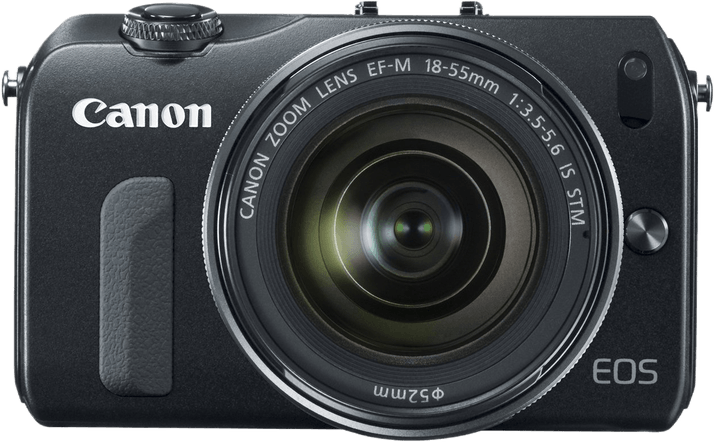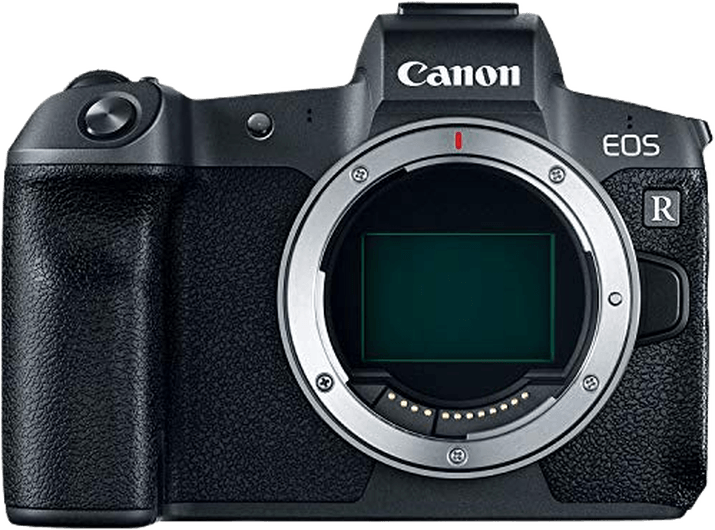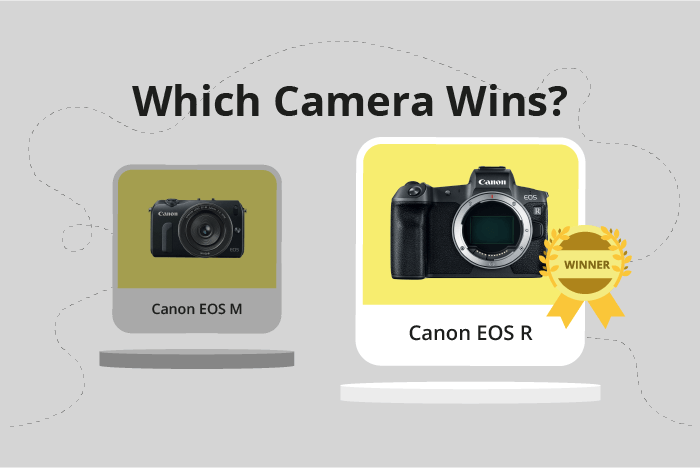Canon EOS M vs EOS R Comparison
Canon EOS M

Canon EOS R

The Canon EOS R outperforms the Canon EOS M with a score of 74/100 compared to 44/100. Both cameras are mirrorless and share similarities in their basic features. However, the EOS R, released in 2018, has a higher launch price of $2300, while the EOS M, released in 2012, debuted at $799. The EOS R is larger and heavier, measuring 136 x 98 x 84mm and weighing 485g, as opposed to the EOS M’s 109 x 66 x 32mm size and 298g weight.
The EOS R’s higher score indicates its superior performance and features compared to the EOS M. However, the EOS M has advantages in terms of size and weight, making it more portable and convenient for some users. Both cameras have their merits, but the EOS R emerges as the better option for more advanced photography needs.
Canon EOS M vs EOS R Overview and Optics
The Canon EOS R triumphs over the Canon EOS M in optics, with a 31-point difference in our scores (73/100 and 42/100, respectively). Both cameras share some specifications: they have CMOS sensor types, Digic processors, and no image stabilisation. Despite these similarities, the Canon EOS R outperforms the EOS M in several key areas.
The EOS R has a higher megapixel count at 30.3, compared to the EOS M’s 18 megapixels, resulting in better image resolution. Additionally, the EOS R boasts a faster shooting speed of 8 frames per second (fps), doubling the EOS M’s 4.3 fps. This allows the EOS R to capture fast-moving subjects with greater ease. The EOS R also has a significantly better DXOMARK score for its sensor, at 89, compared to the 65 of the EOS M. This indicates superior image quality and low-light performance.
The EOS R has a full-frame sensor, while the EOS M has an APS-C sensor. Full-frame sensors produce better image quality, dynamic range, and low-light performance. Furthermore, the EOS R features the Canon RF lens mount, while the EOS M uses the Canon EF-M lens mount. The RF mount offers a wider range of high-quality lenses, providing more options for photographers.
While the EOS M does fall short in these aspects, it is important to consider that it is a more affordable option for those on a budget. The EOS M still offers decent performance for general photography needs.
Taking all of these factors into account, the Canon EOS R is the clear winner in optics, providing superior image quality, speed, and lens options. However, the EOS M remains a viable choice for those seeking a more budget-friendly alternative.
Canon EOS M vs EOS R Video Performance
The Canon EOS R outperforms the Canon EOS M in video capabilities with a score of 70/100 compared to the EOS M’s 43/100. Both cameras share some common specifications, such as a maximum video frame rate of 30fps. However, the EOS R surpasses the EOS M in video quality and functionality.
The EOS R offers 4K video resolution with dimensions of 3840 x 2160, while the EOS M only provides Full HD resolution at 1920 x 1080 dimensions. This difference in resolution allows the EOS R to capture videos with higher detail and clarity compared to the EOS M. Additionally, the EOS R features built-in time-lapse functionality, enabling users to create captivating time-lapse videos without the need for additional equipment or software. This feature is absent in the EOS M, limiting its creative potential in video production.
Despite its lower score, the EOS M still retains value for users who do not require 4K resolution or time-lapse capabilities. Its Full HD resolution is sufficient for casual video recording and sharing on social media platforms. The EOS M’s lower score does not necessarily make it an inferior camera, but it does highlight its limitations in video capabilities compared to the EOS R.
To conclude, the Canon EOS R is the superior choice for videographers seeking high-quality video resolution and creative functionality like time-lapse. The Canon EOS M, while limited in its video capabilities, remains a viable option for casual users who prioritize simplicity and do not require advanced video features.
Canon EOS M vs EOS R Features and Benefits
The Canon EOS R outperforms the Canon EOS M in terms of features, scoring 87/100 compared to the EOS M’s 57/100. Both cameras share some specifications, including a touchscreen and the absence of GPS. However, the EOS R surpasses the EOS M in several aspects, making it the clear winner in this comparison.
The EOS R has a larger screen size of 3.2 inches, compared to the EOS M’s 3 inches. Additionally, the EOS R’s screen resolution is significantly higher at 2,100,000 dots, while the EOS M has a resolution of 1,040,000 dots. This provides a clearer and more detailed image preview for the EOS R users. Furthermore, the EOS R is equipped with a flip screen, making it more versatile for various shooting angles and situations. The EOS M lacks this feature.
Connectivity is another area where the EOS R excels. It comes with built-in WIFI and Bluetooth, allowing for easy transfer of files and remote control of the camera. The EOS M, on the other hand, does not have WIFI or Bluetooth capabilities.
Despite its lower score, the EOS M still offers a few advantages. It is a more compact and lightweight camera, making it easier to carry around for casual shooting. However, this advantage may not be enough to compensate for the significant difference in features between the two cameras.
Based on this comparison, the Canon EOS R is the superior camera due to its larger screen size, higher screen resolution, flip screen, and better connectivity options. The Canon EOS M falls short in these aspects, with its only notable advantage being its compact size.
Canon EOS M vs EOS R Storage and Battery
The Canon EOS R outperforms the Canon EOS M in storage and battery, scoring 35 points compared to the EOS M’s 13 points. Both cameras share similarities, including one memory card slot and compatibility with SD, SDHC, and SDXC memory cards. However, the EOS R has an advantage with its UHS-II compatibility, allowing for faster data transfer rates.
The EOS R also boasts a longer battery life of 370 shots, compared to the EOS M’s 230 shots, and uses the LP-E6N battery type. Additionally, the EOS R offers USB charging, a convenient feature for on-the-go photographers.
The EOS M, while trailing behind in this comparison, still provides a decent battery life and compatibility with various memory card types. Despite its lower score, it remains a viable option for casual photographers.
Taking these factors into account, the Canon EOS R’s superior storage and battery capabilities make it the more reliable choice for photographers seeking enhanced performance and convenience.
Canon EOS M vs EOS R – Our Verdict
Are you still undecided about which camera is right for you? Have a look at these popular comparisons that feature the Canon EOS M or the Canon EOS R:

